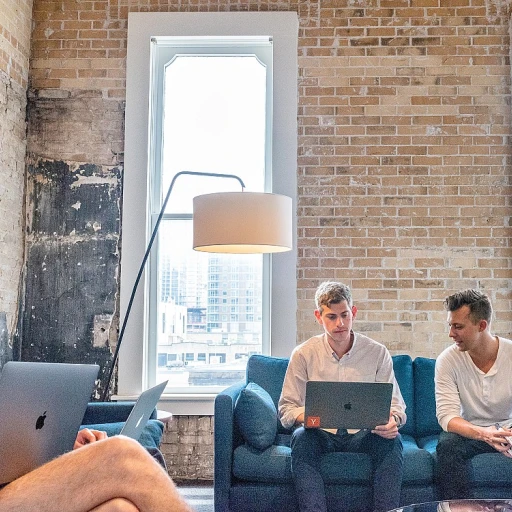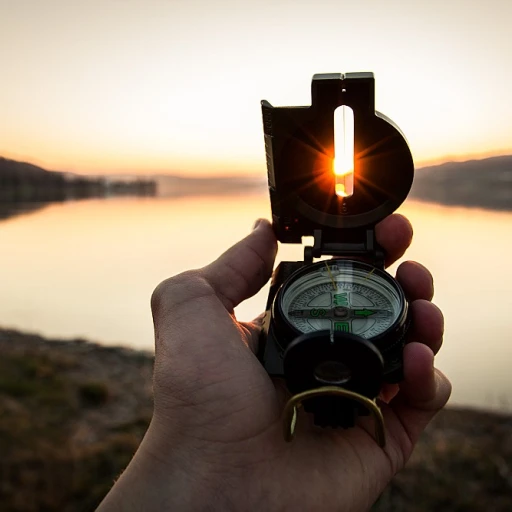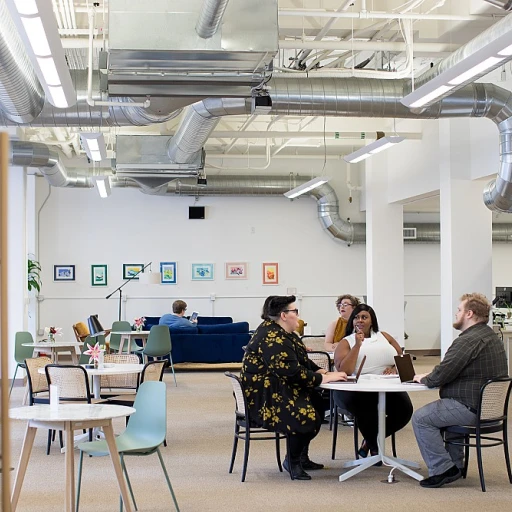Understanding the Concept of Working Pods
Understanding the Emergence of Small, Versatile Spaces
The concept of working pods has emerged as a key innovation in modern workspace design, brought about by the demand for flexibility, privacy, and efficiency in the office environment. Essentially, these structures, resembling compact and versatile rooms, provide a dedicated space for focused tasks, casual meetings, or even quiet retreats within bustling office settings.
Office pods, or work pods, are portable and often modular, allowing businesses to adapt quickly to changing workspace requirements. This feature is particularly advantageous for companies operating in dynamic environments like San Francisco or other bustling urban markets in the United States where office real estate can be costly and space optimization is critical. Design is key as these pods are crafted to offer not just a space, but also a productive and private haven, potentially utilizing soundproof panels and acoustic materials to mitigate noise distractions.
The installation of pods in workspaces is typically straightforward, with options for integration of advanced technologies such as USB ports for connectivity, LED lighting for ambiance, and ergonomic designs inspired by industry leaders like Herman Miller. Whether it's an office pod in a traditional corporate setup or a more unconventional backyard office, these enclosures enhance the overall functionality and aesthetic of the workplace environment.
Pods can take various forms, ranging from solo work pods designed for individual concentration, to larger meeting pods, which provide collaborative spaces akin to modern meeting rooms. By offering a spectrum of uses—from confidential phone calls in a phone booth setup to group brainstorming sessions—work pods cater to diverse office needs.
The rise of these pods and booths reflects a broader shift towards a more personal, adaptable workspace that prioritizes employee well-being. For small businesses, the implementation of office pods can be a strategic solution to balance open office plans with the need for privacy and focused work zones.
Benefits of Working Pods in Modern Workplaces
Advantages of Adopting Working Pods in Today's Offices
In today's modern workplaces, the integration of working pods has become increasingly popular. These innovative spaces are changing the landscape of office architecture, but what exactly makes them so beneficial?
Working pods, also known as office pods or work pods, provide a versatile and adaptive solution for various corporate needs. They serve as ideal spaces for private meetings or focused tasks, offering flexibility that traditional offices struggle to deliver. Notably, pods transform even the most ordinary locations into functional and efficient workspaces.
Firstly, these pods enhance sound privacy. With the use of acoustic panels and advanced soundproofing, employees can conduct calls or meetings without distractions. This feature is particularly useful in open office environments or busy office hubs where noise can impede productivity.
Moreover, the design of working pods tailors to specific tasks, with options like meeting pods and conference booth configurations. This flexibility is not just appealing but necessary for adapting to modern work demands. Pods can range in size from small enclosed offices to larger spaces suitable for team collaborations.
In addition to privacy and adaptability, there's a sustainability angle. Pods can be equipped with energy-efficient technology like LED lighting and ventilation systems. Some models incorporate USB ports and other digital integrations to align with the technological demands of a forward-thinking workplace.
The versatility of working pods extends beyond the conventional office setting. For remote workers or small businesses, options like backyard offices and portable pod booths offer a high degree of mobility and convenience. These spaces are designed not only for functionality but to enhance aesthetic appeal, often available in sleek, modern designs.
Interestingly, companies across the United States, from bustling cities like San Francisco, are embracing the pod workplace model. They find utility in the pods' rapid deployment and ease of assembly, acting as reliable solutions for temporary or permanent workspace needs.
Implementing working pods supports business needs by offering a carefully designed, acoustically balanced, and private environment, ultimately allowing employees to perform at their best. The move towards these structures forms part of a broader trend—an ongoing evolution of workspace design focused on enhancing comfort and productivity. For further insights on optimizing physics and digital navigation in the workplace, explore more on
navigating the future workspaces.
Working Pods and Employee Well-being
Creating Personalized Spaces for Enhanced Employee Comfort
The introduction of working pods in office environments signifies a growing recognition of the importance of employee well-being. These innovative pods, designed with acoustic panels and soundproofing measures, offer private spaces that enable employees to escape the noise and distractions typical of traditional office settings. The delivery of a serene environment is particularly crucial for tasks requiring concentration and creativity.
Moreover, working pods have been meticulously designed to cater to individual needs. Many of these pods, ranging from phone booths to meeting pods, incorporate elements such as ergonomic seating and integrated USB ports, ensuring a balance between comfort and productivity. This personal touch often translates into improved job satisfaction and reduced stress levels.
Meeting Pods: Enabling Collaborative yet Private Discussions
Apart from serving individual requirements, working pods also address the need for collaborative discussions. Meeting pods offer a semi-private meeting space that allows teams to brainstorm without disturbing or being disturbed by the surrounding noise. These pods are particularly beneficial for small businesses seeking efficient use of limited space in urban settings like the bustling offices of San Francisco.
The rise of pods booths and similar structures enables employees to engage in meetings or discussions with a focus on privacy. By minimizing sound interference through innovative design, teams are afforded a confidential atmosphere that fosters honest communication. Additionally, the advantage of having a meeting room that is both functional and secluded supports the principle of flexibility in modern workspace design.
The Role of Environment and Community in Work Pods
Incorporating elements such as lighting and aesthetics further enhances the well-being factor. Many of these work pods feature adjustable LED lights and customizable decor, allowing users to tailor their environment to suit their mood or the task at hand. Companies like Herman Miller play a crucial role in offering products that marry functionality with style.
Moreover, the advent of working pods is aligned with the trend towards creating diverse and inclusive work environments. By providing different working options, office pods cater to individuals with varying preferences, promoting a sense of belonging and respect within the corporate community.
To explore more about the role of technology in enhancing workspace productivity, which is intricately linked with the rise of working pods, check out our
in-depth analysis on technology and gadgets for the workplace.
Technological Integration in Working Pods
Integrating Technology into Modern Working Pods
The fusion of technology with traditional office spaces has long been underway. Modern working pods are now at the forefront of this evolution, embodying a synergy of innovative design and cutting-edge tech. These pods are equipped with features that cater to the ever-increasing digital demands of today’s work environments.
In urban centers like San Francisco, working pods seamlessly integrate USB ports for easy device connectivity, allowing employees to plug in and work without disruption. This technological feature, though simple, addresses employee needs for accessible and efficient power solutions. For those who work in tech hubs or operate small businesses, having instant access to charging ports within these pods is nothing short of a boon.
Acoustic panels are thoughtfully designed within these pods to create a quieter, more focused work environment. Soundproof office solutions are more important than ever in bustling office spaces, delivering the privacy and silence employees need to concentrate. The integration of these panels, alongside other soundproofing elements, ensures that conversations remain confidential. This feature is particularly crucial in environments that serve clients or handle sensitive information.
Lighting within these pods has also been upgraded to enhance productivity. LED lights are prominently incorporated, providing illumination that reduces eye strain and matches natural light patterns. These lights contribute to the overall ambiance, supporting both morning energy boosts and evening wind-downs.
For collaborative efforts, meeting pods offer video conferencing capabilities, turning any private room into a virtual meeting space. This incorporation of communication technology means that employees can seamlessly transition from solo work to group meetings within the comfortable confines of their pod booth.
The technology within working pods doesn’t just stop at functional enhancements. Pods designed for today’s workspaces boast smart features that adjust to user preferences, transforming everyday offices into futuristic workstations. From controlled climate systems to smart boards, these features ensure that every pod can adapt to different types of work and employees.
As office pods continue to evolve, they stand to redefine the future of workspaces with not only technological flexibility but also through their product design solution that can be tailored to varying office needs. Whether it’s a backyard office or an internal meeting room, pods deliver in functionality and form.
Challenges and Considerations in Implementing Working Pods
Implementing Working Pods: Challenges and Key Considerations
The integration of work pods into modern office environments presents a myriad of challenges, despite the numerous benefits they offer. To successfully implement these innovative spaces, businesses must navigate various design and logistical factors.
Firstly, the cost of installation and the uncertainty concerning return on investment is a significant consideration. Companies often need to weigh the initial financial outlay against the potential increase in productivity and employee satisfaction that pods promise. Especially for small businesses, this can be a critical factor in decision-making.
Acoustic performance is another pivotal concern. Pods are designed to provide a quiet and private space, essential for tasks requiring high concentration or sensitive discussions. Utilizing acoustic panels and requiring soundproof technology are vital to achieving this, and companies must ensure that the products they choose meet these essential standards.
In terms of design, office pods need to be adaptable and versatile, fitting seamlessly into existing office layouts without compromising on style or functionality. This adaptability is crucial in mixed environments like open-plan offices, where flexibility can enhance the overall workspace flow.
Additionally, technological integration is a must for working pods. Incorporating features such as USB ports, LED lighting, and other tech-savvy options can elevate the usability of these spaces, turning them into tech-enabled pods that support various work models. Meeting pods must also cater to connectivity needs, ensuring smooth integration with workplace digital communications.
Finally, delivering a balance between open and private work areas can be tricky. It's about finding the right mix of privacy and collaboration-friendly spaces. Companies need to assess their specific needs and employee preferences to ensure successful implementation. Also, local regulations in different regions, such as San Francisco or another part of the United States, may impact design and placement.
By addressing these challenges with thoughtful consideration, businesses can create harmonious work environments where these office pods serve as a catalyst for employee well-being, productivity, and company culture.
The Future of Workspaces with Working Pods
The Trajectory of Workspaces Embracing Working Pods
As we gaze into the future of office environments, the integration of working pods is undeniably transforming workspace dynamics. Designed with acoustic panels and offering soundproof office solutions, these pods are redefining how we perceive privacy and productivity in the professional realm.
In major urban centers like San Francisco, the demand for flexible working spaces has driven small businesses to adopt work pods. These office pods are not just about aesthetics but focus on providing an environment conducive to concentration and private conversations. Meeting pods equipped with acoustic panels can potentially replace traditional meeting rooms, offering the same functionality in a more compact and portable form.
Technological advancements are seamlessly woven into the design of these pods. From LED lighting to USB ports, the modern pod booth is a fusion of comfort and connectivity. This ensures that users have a product that supports both solitary and collaborative work needs effectively.
Moreover, the appeal isn't limited to large corporations. Even small business owners find value in these pods, whether as backyard offices or soundproof offices, elevating work-from-home setups to new heights. The innovation of office pods isn't confined to the United States; it’s a global movement towards more sustainable and inclusive workspace designs.
However, with such innovative workspace designs comes the challenge of balancing the need for privacy with openness. Future designs must consider not just the acoustic and practical elements, but also the psychological effects on employees within these booths.
In conclusion, working pods are poised to dominate the future of workspaces. As demand rises for more versatile and private work environments, the role of these pods will only become increasingly significant. Their adaptability and design promise a new horizon for productivity in both corporate and personal spaces.













